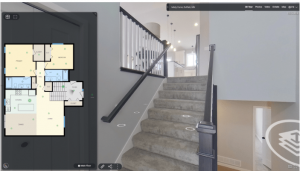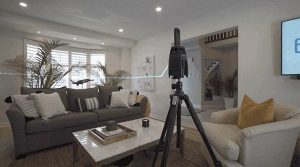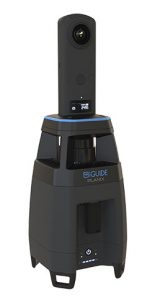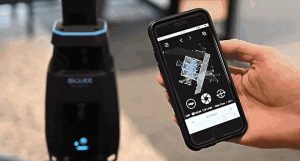It’s said that success in real estate is all about location, location, location.
But as the technology used in developing virtual tours gets better and more powerful, those locations – well, often the first look at those locations – are being turned into digital, data-driven, interactive 3D experiences. Those digital experiences, in turn, are important triggers for successful real estate marketing and sales, facilities rentals, property management, architectural design, and quality of life at home or at work.
For commercial, recreational, and residential spaces like hotels and hospitality centres, shopping malls, conference and meeting facilities, sports stadiums and music venues, not to mention the family home, virtual tour technology is more and more used to create a unique presentation of place, property or built environment, one with all the bells and whistles one might expect from a digitally mediated online experience these days.
Property buyers and sellers can take advantage of an ever-widening selection of service providers and dedicated products that can create virtual tours, including proprietary cameras, ranging finding devices, software platforms and other tools for capturing and delivering immersive 3-D virtual tours that are supplemented with links to extensive property data.

Property buyers and sellers can take advantage of an ever-widening selection of service providers and dedicated products that can create virtual tours, as seen in this image from iGUIDE.
iGUIDE, Matterport, EnDesign, InsideMaps, Insta360, Immoviewer, Zillow, Asteroom, Metareal, Vpix360, and CVT are just a few of the many companies operating in the virtual tour space.
Service provider CVT, for Canadian Virtual Tours, for example, provides immersive and interactive 3-D tour of a selected space by combining panoramic photos, navigation hotspots and hot-linkable content tags in a virtual tour that can be watched on screen, and is also headset compatible.
For its part, Canadian company EnDesign creates animated virtual tours by combining hand-sketching, animation software and other computer-assisted design (CAD) tools in high-resolution 3-D models and renderings of residential, commercial, and other properties as architectural visualizations or VR experiences.
Planitar, another Canadian tech firm operating in this space, provides high-end products and services used to make immersive virtual tours, including new hardware that’s said to be a quick, easy and inexpensive way for real estate agents and property managers to create their own virtual tours.
Founded some ten years ago in Kitchener, Ontario, Planitar makes a digital system called the iGUIDE PLANIX, a proprietary camera and software platform for capturing and delivering immersive 3-D virtual tours that let viewers navigate and explore various built environments.

A 3-D virtual tour system from Planitar features a 360° digital camera combined with a 2-D laser distance scanner.
The system from Planitar now features a 360° camera combined with a long-range 2-D laser distance scanner. The combined 360° imagery and 2-D laser point data cloud is the foundation for not only accurate floor plans, but also for creating accurate 3-D environments without needing a complicated 3-D wire mesh.
The captured high resolution camera data is processed by iGUIDE software to deliver a navigable 3-D virtual and visual tour complete with floor plans and property measurements.
Thanx to its long-range laser sensor, the iGUIDE camera needs fewer set-up positions to collect the necessary data; the company reports that a 3,000 sq. ft. home can be captured in 15 minutes.
It was back in May 2013 when the company launched its iGuide technology, pitching a production service to real estate agents in the region. Within a couple of years, the company pivoted, changing its business model from a service provider to a technology provider, and it began selling iGUIDE cameras to a wider array of customers, not only real estate agents, but architectural photographers, product marketing agents, hospitality destination operators and more.
Of course, several versions of the main camera or imaging device used in the iGuide have evolved over the years. Planitar started out by using a small 2-megapixel webcam. Later, a Canon Rebel DSLR was used (mounted on a controllable, rotating camera support device).

Planitar’s iGuide sports a high-end Ricoh THETA Z1 camera, with output resolution of 26 megapixels.
Today, Planitar’s iGuide sports a high-end Ricoh THETA Z1 camera, featuring an output resolution of 26 megapixels. It is Wi-Fi equipped, and it also operates as a LIDAR device, a light emitting range detection and imaging device with 360-degree scan angle and 40 metre range.
Representing many of the best features of virtual touring, Planitar’s iGuide system can not just picture an interior space, but it can map it and provide accurate floor plans, property measurements and square footage totals. By integrating digital and visual data, the detailed documentation that accompanies a virtual tour can be used by insurance, restoration, engineering, design, construction and facilities management companies of all sizes and in many countries.
Planitar had made some 400,000+ iGUIDEs and scanned more than one billion sq. ft. of facilities in more than 40 countries, it reported in its tenth year of operation.
Now, it has announced the release of iGUIDE Instant, at least in beta and for starters only in the U.S., as an inexpensive service offering to let real estate photographers quickly create effective 3-D virtual tours and interactive floor plans in minutes. The service will take uploaded images and use the iGUIDE navigation and wayfinding software, now driven by proprietary AI technology, to give listing agents and potential buyers an immersive property viewing experience and a virtual marketing advantage in the market.
According to a 2013 survey of home buyers described in the Zillow Consumer Housing Trends Report 2023, at least two-third (67 %) said they “wish more listings had 3-D tours available.”
Location location location becomes enhanced as virtual virtual virtual.

Two-thirds of surveyed home buyers wish they had a virtual tour of the property.
-30-



